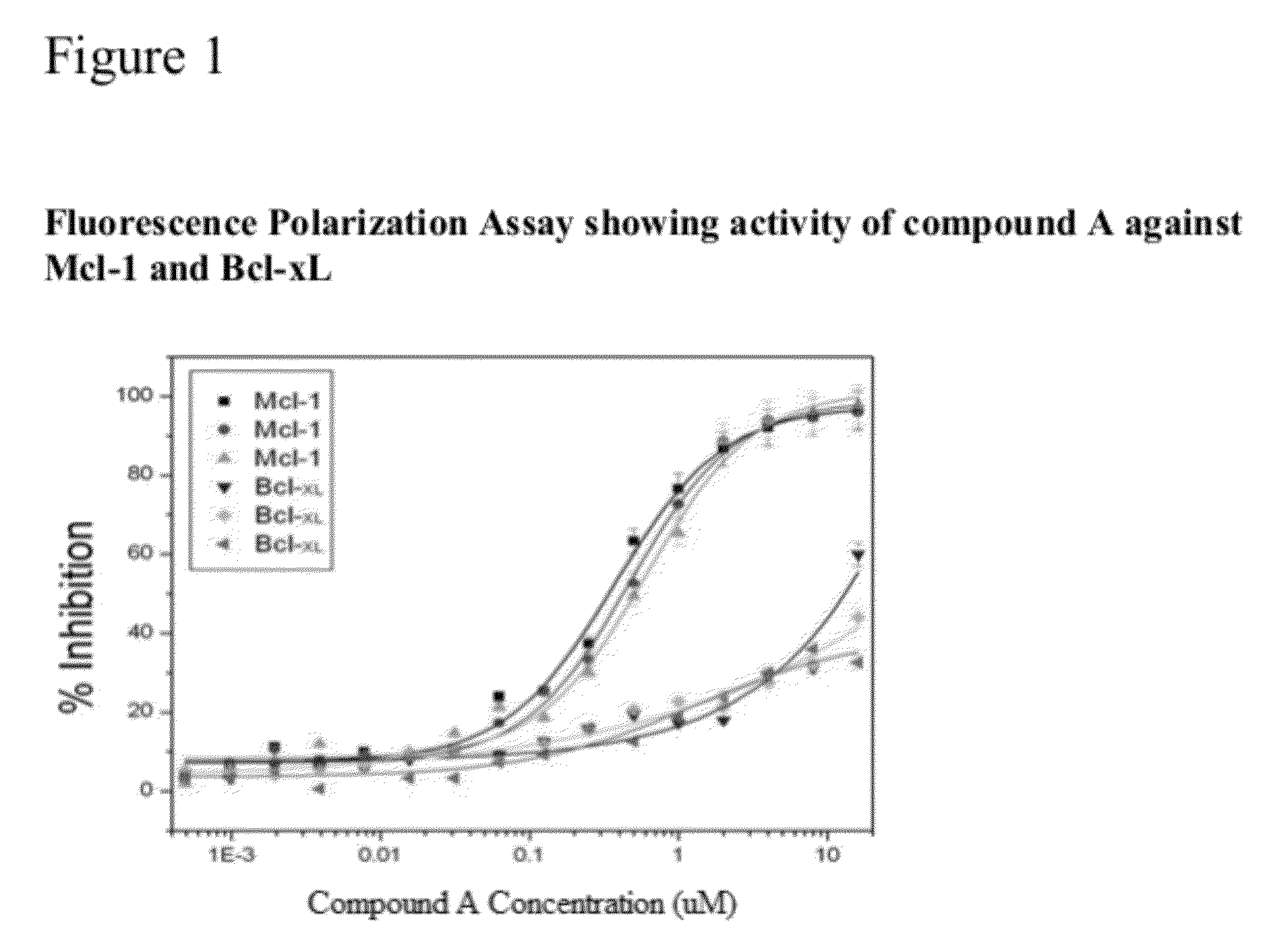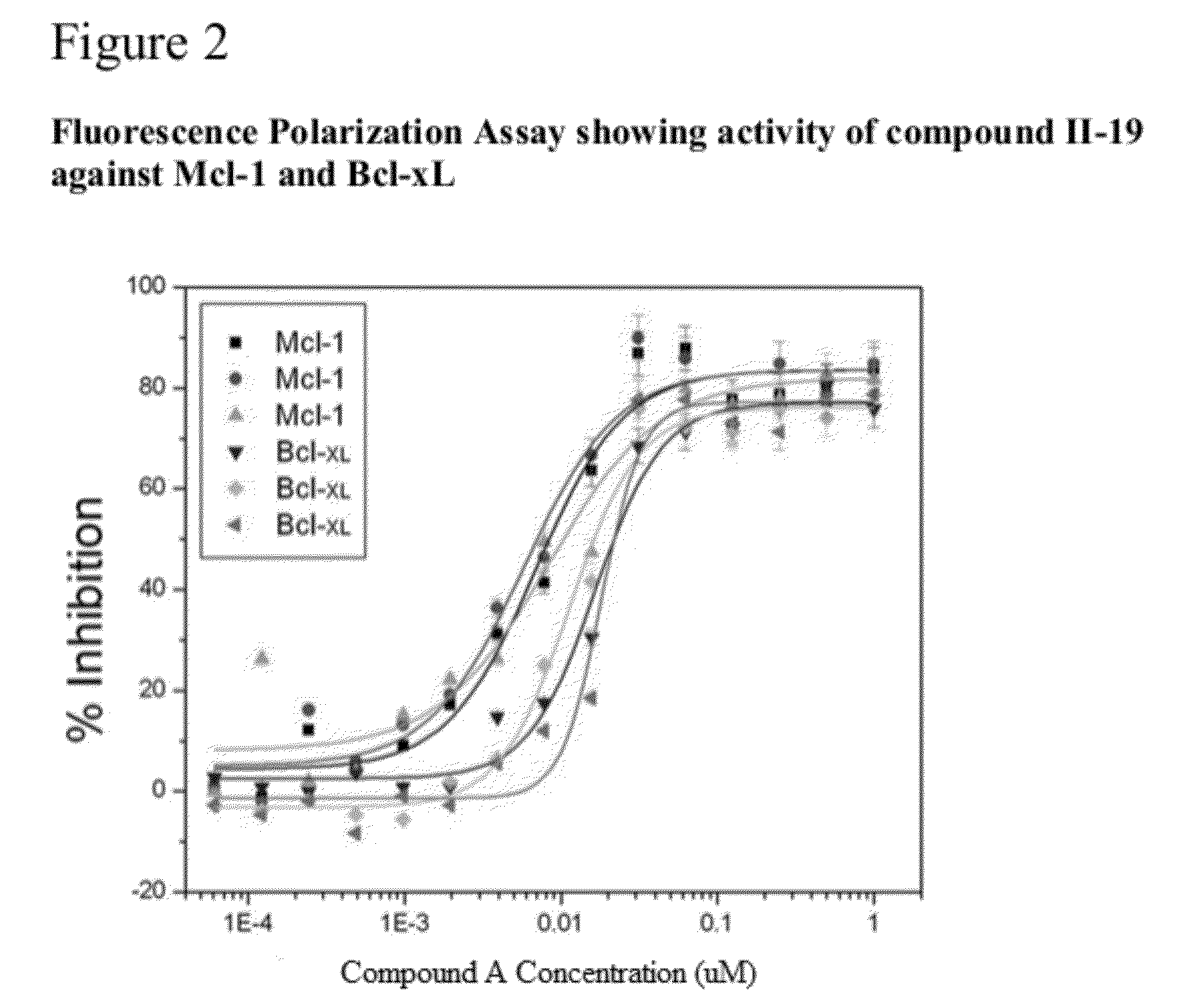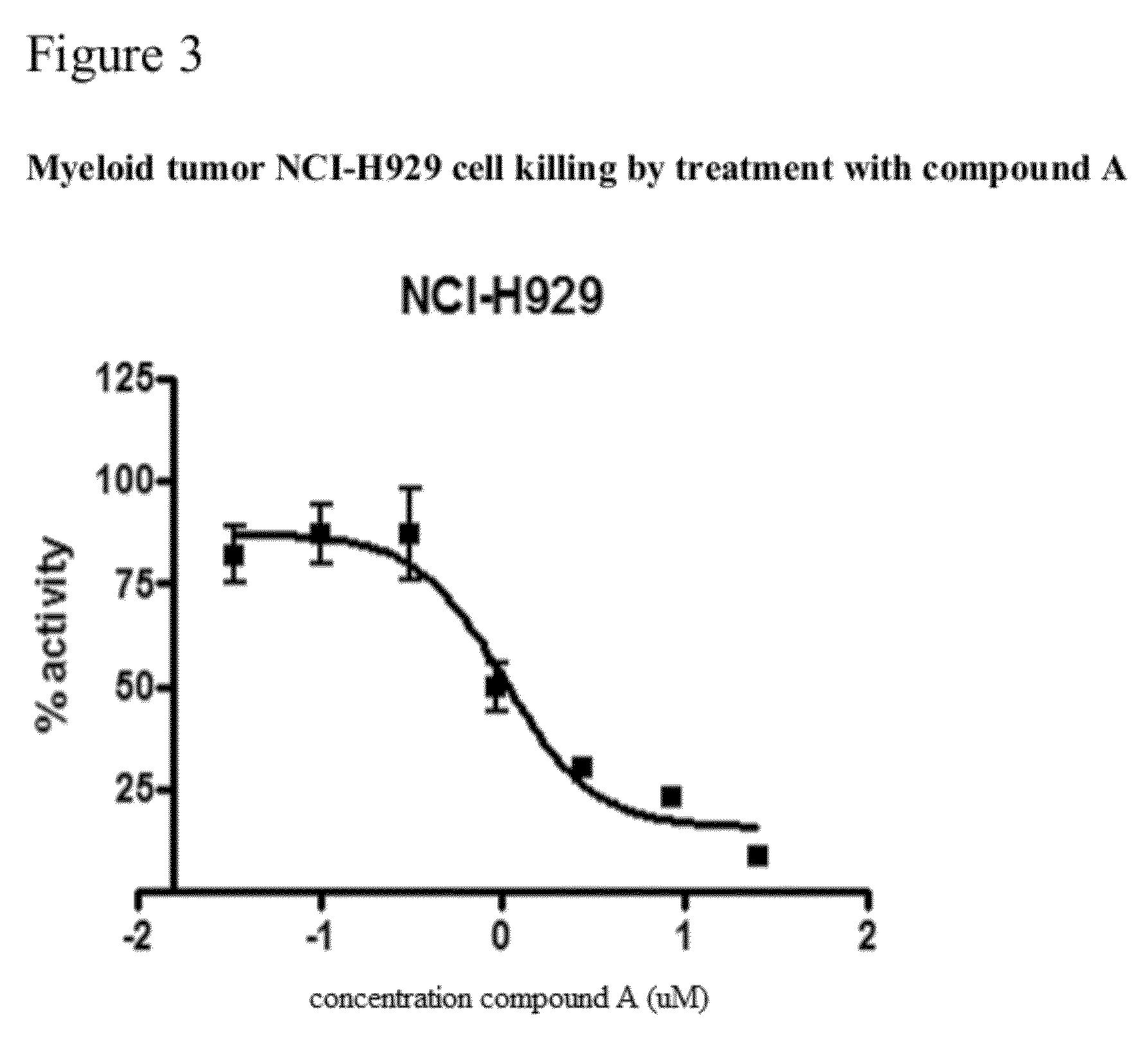2,2′-biphenazine compounds and methods useful for treating disease
a technology of biphenazine and compounds, applied in the field of compounds and methods for treating cancer and autoimmune diseases, can solve the problems of blocking the sensitivity of tumor cells to cytostatic or apoptosis inducing drugs, poor survival prognosis of patients with cll, and poor survival prognosis, and achieve the effect of blocking unwanted cell survival activity
- Summary
- Abstract
- Description
- Claims
- Application Information
AI Technical Summary
Benefits of technology
Problems solved by technology
Method used
Image
Examples
example 1
Synthesis of Compound II-19
[0435]
[0436]The starting compound (lomofungin) was dissolved in DMSO and irradiated with UV light for 24 hours. Dimerization was monitored by LC-MS on a C18 column eluted with a methanol gradient (0-90% methanol with 0.1% trifluoroacetic acid).
[0437]The starting material (lomofungin) was characterized by NMR and LC / MS. NMR (DMSO-d6) gave peaks at 3.99 ppm (3H), 6.84 ppm (1H), 7.27 (1H); 8.17 (1H), 10.93 (1H), and 11.10 (1H). LC-MS peak exhibited peaks at 315 (MH+) and 316 (MH2+).
[0438]Analysis of Compound II-19 Compound II-19 was characterized by NMR and LC / MS. NMR (DMSO-d6) gave peaks at 3.99 ppm (3H), 7.34 (1H); 8.21 (1H), 11.07 (1H), and 11.21 (1H). LC-MS peak exhibited peaks at 627 (MH+) and 628 (MH2+).
example 2
Preferential Inhibition of Mcl-1 by Compound A
[0439]The expression level of Mcl-1 correlates directly to chemo-sensitivity and survival of certain non-Hodgkin's lymphomas (Petlickovski et al. (2005) Blood 105(12): 4820-7) as well as prostate cancer (Royuela et al. (2001) Eur. Cytokine Netw. 12(4): 654-63), liver cancer (Fleischer et al. (2006) Int. J. Oncol. 28(1): 25-32) and other cancers. Mcl-1 is therefore an ideal target for treating these cancers. This example shows that the BH3 mimic compound A inhibits the binding of the BH3 domain of the Bcl-2 family protein Bim to Mcl-1 and, to a lesser extent, Bcl-xL. Accordingly, this example indicates that compound A may be particularly effective in treating certain hematological malignancies that are affected principally by the Bcl-2 family protein Mcl-1.
Materials and Methods
[0440]In this example, a Fluorescence Polarization (FP) assay was used to demonstrate the activity of the BH3 mimic compounds A in inhibiting Mcl-1 as well as Bcl-x...
example 3
Inhibition of Mcl-1 by Compound II-19
[0445]The compound II-19 is assessed for ability to inhibit binding of the BH3 peptide of Bim to Mcl-1 and Bcl-xL. The activity for blocking Bim BH3 binding to both Bcl-xL and Mcl-1 fusion proteins are compared as in Example 2.
Materials and Methods
[0446]Experiments are performed using the fluorescence polarization assay as described in Example 2. Either Bcl-xL or Mcl-1 fusion proteins were titrated and maximum mp shift indicate binding concentrations for drug titration studies, as described in Example 2. Compound II-19, was titrated from 10 μM to 0.1 nM in 2 fold serial dilution into the peptide / protein solution. The IC50 for blocking each BH3 peptide from Mcl-1 are assessed using FP, as described in Example 2.
Results
[0447]Data from Fluorescence polarization studies comparing binding of the Bim-BH3-FITC peptide to soluble Mcl-1-GST and Bcl-xL-GST proteins exposed to compound II-19 in concentrations ranging from 10 μM to 1 nM is shown in FIG. 2. Y...
PUM
| Property | Measurement | Unit |
|---|---|---|
| concentration | aaaaa | aaaaa |
| time | aaaaa | aaaaa |
| time | aaaaa | aaaaa |
Abstract
Description
Claims
Application Information
 Login to View More
Login to View More - R&D
- Intellectual Property
- Life Sciences
- Materials
- Tech Scout
- Unparalleled Data Quality
- Higher Quality Content
- 60% Fewer Hallucinations
Browse by: Latest US Patents, China's latest patents, Technical Efficacy Thesaurus, Application Domain, Technology Topic, Popular Technical Reports.
© 2025 PatSnap. All rights reserved.Legal|Privacy policy|Modern Slavery Act Transparency Statement|Sitemap|About US| Contact US: help@patsnap.com



